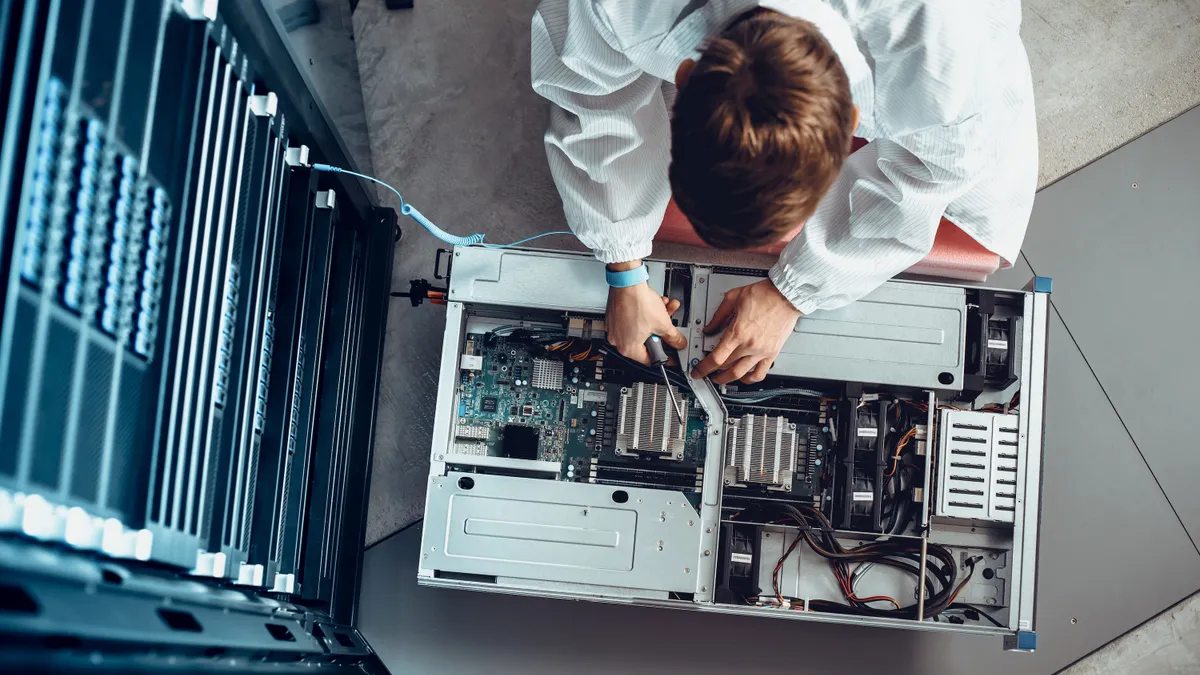Dive Brief:
- Just as employees led the "bring your own device to work" trend, they also may be ahead of their companies in accepting augmented reality (AR) and virtual reality (VR) in the next wave of office technology, according to a Dec. 5 Mojo Vision report.
- Among the report's findings, 78% of workers surveyed would be open to wearing extended reality headsets (the broad term for AR and VR tech, also seen as XR) at their employer's request, and 48% think XR headsets and related devices could help them learn new skills at work. More than half of surveyed respondents (55%) said these headsets and devices will be as commonplace as smartphones. And under half of respondents think technology will be less visible, operating in the background so that they can focus on their work.
- The report also identified ways XR can help workers' performance, including allowing them immediate access to such information as forecasts, sales figures ad other key data; aiding workers with public speaking engagements by keeping information before them so they won't forget it; and helping workers abide by required procedures, processes and compliance measures.
Dive Insight:
XR tech may be showing up in more workplaces as the new decade dawns. In fact, a Perkins Coie survey found that 78% of polled execs and investors said they believe XR can be applied to workforce development. As the Mojo report suggested, XR technology could become as common as the smartphone or other everyday tech devices. Consumers already use VR for gaming and may find that transitioning the technology into the workplace is a natural next step. However, the Perkins Coie survey also notes that glitches in user experience and the availability of content may be two serious shortfalls that employers must consider before adopting the technology.
As developers work out glitches in the technology and the workplace adopts it, employers will need to know when employees will be ready to use it. Christa Manning, director of HCM Innovation at Ultimate Software, told HR Dive in a 2018 interview that getting employees ready to use the technology can be challenging. Employers should first have a strong business case for use of the tech before heading into full-scale adoption.
To use such tech, learning and development professionals should work with IT to make sure employees have the correct hardware and WiFi connections so data can be processed in real time. "Like any new technology or change in the business, learning professionals really have to focus on supporting the workers empathetically through the change and market the benefits for the worker as well as the business," said Manning.













